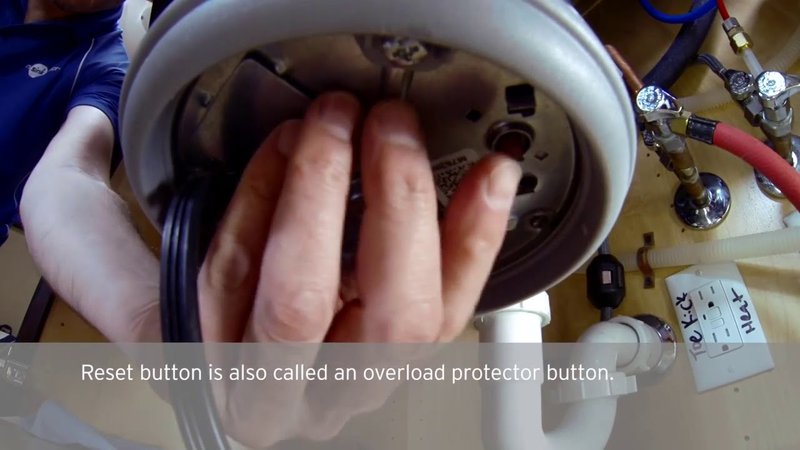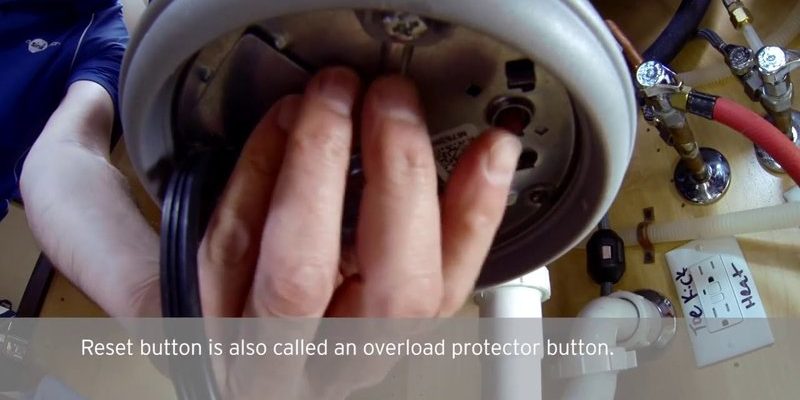
Getting an error code can be frustrating, especially when it interrupts your daily routine. But don’t worry, dealing with Error Code E1 doesn’t have to be a daunting task. It’s usually something you can fix on your own without needing to call in a professional. Understanding how to reset your Insinkerator garbage disposal can save you time, money, and a lot of headaches. Let’s dive into the steps to get your garbage disposal back up and running smoothly.
Understanding Error Code E1 and Its Causes
Before we get into the solution, let’s understand what causes Error Code E1. Generally, this error code indicates a motor overload. Think of it as your garbage disposal signaling it’s overwhelmed, much like how you feel after a heavy meal when taking on just another bite seems impossible. This overload can occur for several reasons, including a jam inside the disposal, an electrical issue, or sometimes a combination of both.
When your garbage disposal jams, it’s often because something is stuck or caught in the blades. This can happen if non-grindable items, such as bones or utensils, accidentally make their way into the disposal. It’s like trying to shred a metal spoon in a paper shredder—not going to end well! Another common reason for Error Code E1 is electrical issues, such as a power surge or faulty wiring. The motor’s inherent safety feature kicks in, shutting everything down to prevent damage.
Understanding these causes can help you prevent them in the future. Avoid putting fibrous materials, large bones, or non-food items down the disposal. Also, ensure your appliance’s electrical setup is in good condition. Now that we’ve identified potential causes, let’s look at how to reset your garbage disposal to resolve this issue.
Steps to Reset Your Insinkerator Garbage Disposal
Here’s the deal: Resetting your Insinkerator is a straightforward process. Much like rebooting a stubborn computer, a reset can often clear up any issues. First, ensure your safety by making sure the disposal is off. You definitely don’t want any surprises while your hand is in the vicinity. To be extra cautious, unplug it from the power outlet or switch off the circuit break.
Next, locate the red reset button on the bottom or side of your unit. This button is like a “refresh” button for your garbage disposal. Once everything’s off, press the reset button. You might feel or hear a slight click, which means the reset has been activated. Afterward, plug the unit back in or switch on the circuit breaker.
Finally, test the disposal by running a small amount of water and turning it on to see if it’s back to its usual self. If the motor powers up without any trouble, you’ve successfully reset your unit. However, if you’re still facing issues, there might be a deeper problem that needs addressing.
What To Do If Resetting Doesn’t Work
What if you’ve tried resetting your disposal, but Error Code E1 persists? Don’t panic—it might just mean a bit more troubleshooting is needed. The first thing to check is whether there’s a jam inside the unit. Using a flashlight, look down the drain to see if any obstructions are visible. If you spot something, use tongs or pliers to carefully remove it. Remember, never use your hands to reach inside.
If there are no visible obstructions, the issue might be with the wiring or circuit. Check the power connections and ensure they’re secure. If you’re still stumped, it may be time to consult the manufacturer’s guide or reach out to customer service for additional help. While it can be tempting to keep trying things on your own, sometimes getting professional advice is the best route.
In some cases, frequent error codes could signify the need for a new unit, especially if your disposal is older and worn out. It’s like trying to fix an old car that constantly breaks down—sometimes, it’s more cost-effective to invest in a new, more reliable model.
Preventative Tips for a Trouble-Free Garbage Disposal
Keeping your garbage disposal trouble-free is much like maintaining a healthy lifestyle—it requires consistent and mindful habits. One essential tip is to use cold water anytime you run your disposal. Cold water helps solidify any lingering fats or greases, making it easier for the blades to chop them up. On the flip side, hot water can melt them, leading to build-ups that might clog your pipes.
Another key tip is to avoid overloading your disposal. Like an overloaded grocery bag, too much at once can cause it to spill or jam. Feed waste gradually, allowing the blades ample time to process everything efficiently. Likewise, regular cleaning can prevent build-up and odor. Toss in a few ice cubes followed by cold water to help clear away debris.
Lastly, schedule routine checks to ensure your disposal’s wiring and connections are secure. By being proactive, you can prevent many common issues from arising, keeping Error Code E1 at bay. Remember, a little maintenance here and there can mean a smoother, more hassle-free experience with your garbage disposal.
In conclusion, while encountering Error Code E1 on your Insinkerator garbage disposal can be a nuisance, it’s usually something you can handle with a bit of understanding and simple maintenance. And if you find yourself repeatedly facing issues, know that help is always a call or manual away.
